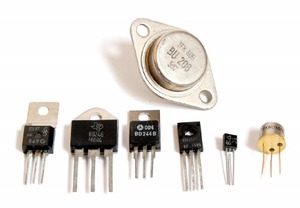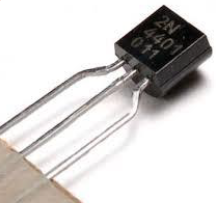Categories
- Quadcopter
- Aquaculture
- Raspberry Pi
- Video
- Components
- Gadgets
- Auto & Outdoors
- Home Automation & Security
- Audio
- Mobile Accessories
- IT
- Hobby
- Tools, Test & Mesurement
- Drones
- Drone Battery
- Spare Parts
- Remote Control Drone
- Fishing Release
- Racing Drones
- Autel EVO 2
- FPV Drone
- Mini Drone
- Drone with Camera
- Drones with FPV Display
- Beginner Drones
- GPS Drone
- Wifi FPV Drones
- Waterproof Fishing Drone
-
DJI Drones
- DJI Drone Accessories
- DJI Air 2S
- DJI Drone Spare Parts
- DJI Enterprise
- DJI FPV Racing Drone
- DJI Inspire Drone
- DJI Mavic Air
- DJI Mavic Drone
- DJI Mavic Mini
- DJI Mavic Mini 2
- DJI Spark Drone
- iFlight Racing Drones
- Mavic 2
- Mavic air 2
- Mavic Air 2 fly More combo
- Mavic Air 2 RTF
- Mavic Pro Platinum
- Phantom 3 Drone
- Phantom 4 Advance
- Phantom 4 Drone
- Phantom 4 Pro
- LED Light
- LED Lantern
- LED String / Fairy Lights
- LED Work Light
- LED Party Lights
- LED Torch
- LED Head Torch
- Household LED Light
- 12V LED Lights
-
LED Strip Lights
- Green LED Strip Light
- Power Supply
- Red Led Strip Light
- USB LED Strip Light
- Yellow LED Strip Light
- Accessory
- Blue LED Strip Light
- Neon LED Strip Light
- Rigid LED Strip Lights
- White Led Strip Light
- RGBW LED Strip Lights
- Digital LED Light Strip
- 2835 LED Strip Light Kits
- RGB LED Strip Light
- 5050 LED Light Strip Kit
- Toys
- HDMI
- HDCP Converter
- IQ4 Compatible HDMI Products
- HDMI Wall Plate Socket
- HDMI Audio Extractor
- HDMI Matrix Switcher
- HDMI Wireless Transmitter and Receiver
- HDMI Extender
- HDMI Converter
- HDMI Splitter
- HDMI Switch
- HDMI Adapter
-
HDMI Cable
- Mini Display Port
- Display Port
- Amplified HDMI Cable
- DVI Cable
- HDMI to VGA Cable
- HDMI to Micro HDMI Cable
- HDMI to DVI Cable
- HDMI to Mini HDMI
- Premium High Speed HDMI Cable with Ethernet
- High Speed HDMI Cable with Ethernet
- Hybrid Fibre Optic HDMI 2.0 Cable
- HDMI 2.0 Cable
- 8K HDMI Cable
- 4K HDMI Cable
- Hybrid Fibre Optic HDMI 2.1 Cable
- Media Player & Set Top Box
- Arduino Projects
- Power
- Battery Tester
- Transformer
- DC Power Cable & Connectors
- Solar
- Switchmode Power Supply
- AC Power Cables, Plugs and Sockets
- Powerboard and Adaptors
- Travel Adapter
- Battery Chargers
- Batteries
- USB Charger
-
GPO & Light Switch
- Electrical Accessories
- Circuit breaker
- Distribution Box
- Plug Base Socket
- Weatherproof Socket
- Black Light Switches
- Clipsal Style White
- Smart Zigbee Power Switch
- Black Power Points
- Smart Zigbee Power Socket
- Slim Series
- Alpha Series
- GPO Wall Sockets
- Power & Light Switch
- Glass Series
- Smart Wifi Power Socket
- Smart Wifi Light Switch
-
Power Adapter
- Extension Cables, Splitters and Plugs
- Reversible DC Plug
- Linear Type
- UPS
- Multi-voltage Power Adapter
- 14V DC Power Adapter
- 13.8V DC Power Adapter
- 3.3V Power Adapter
- 19V DC Power Adapter
- 7.5V DC Power Adapter
- Variable Power Supply
- USB Power Adapter
- 18V DC Power Adapter
- 48V Power Supply
- AC Power Adapter
- 24V DC Power Adapter
- 15V DC Power Adapter
- 9V DC Power Adapter
- 6V DC Power Adapter
- 5V DC Power Adapter
- 12V DC Power Adapter
Information
What is a Transistor?
Author: Tyson Popynick Date Posted:7 April 2016

What is a transistor?
A transistor is the semiconductor that changed the world. It is the successor to the vacuum tube, and essentially the technology that drives everything we know. It has 3 legs and is commonly used to amplify signals and to switch circuits rapidly.
Note that FETs are included, the pins are interchangeable between gate, drain and source – and base, collector and emitter.
What is the schematic symbol for a transistor?
The symbol above is for an NPN type transistor. PNP will be quite similar, with the arrow reversed. If you can identify this symbol you will know you are looking at a transistor, and a quick google search can help you narrow down the exact type.
You may notice the letters B,C and E on there. They are to represent the 3 legs: Base, Collector and Emitter.

How do I tell its value?
There will be a part number on the flat face of the component. A google search will result in all the info you need to know. There are other components that come in the same package as you commonly see transistors in, however by simply typing the part number into google you can easily get data on the part. You can purchase a transistor identifier, which you could plug a random transistor into, and it will tell you the characteristics and type of the component.
What are some common uses?
Transistors are commonly used as really fast, solid-state relays or switches. You place current on the significant leg, and it will allow current to freely flow between the other legs. The particular legs and amount of current needed to switch – as well as the time taken to do so – are all dependent on the part used. Different parts offer different characteristics depending on what you need.
What are transistors made of?
Transistors are a sandwich of 3 layers of semiconductor. PNP, NPN etc depending on the device in question. They are usually housed in plastic casings, however metal casings and strange part layouts are common due to this component being an extremely common one. When they say a microchip has x amount of transistors they essentially mean it has x amount of pnp or npn type junctions within its structure.

How do transistors work?
Transistors are quite a complex topic, and the way they work cannot be explained within this scope. Suffice to say that they work like switches, and can be used to amplify circuits. As you forage into electronics you will gain a deep understanding of transistors. I would suggest some youtube watching on how they work etc.
Example Use:
You might use a transistor to drive a high-current load, such as a motor or large LED. Another common use would be to turn an LED on when the voltage reaches its threshold value, this can be used in conjunction with voltage shifting circuits to drive LEDs, like the ones in your network card to show activity.
Useful Resources etc:
Wikipedia (As always)
Youtube (Just linked the search, choose videos that seem good to you…this way you will stay interested)


